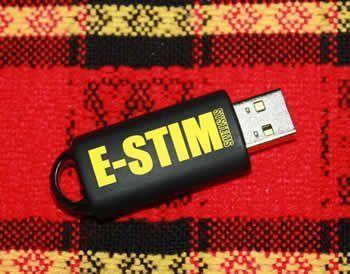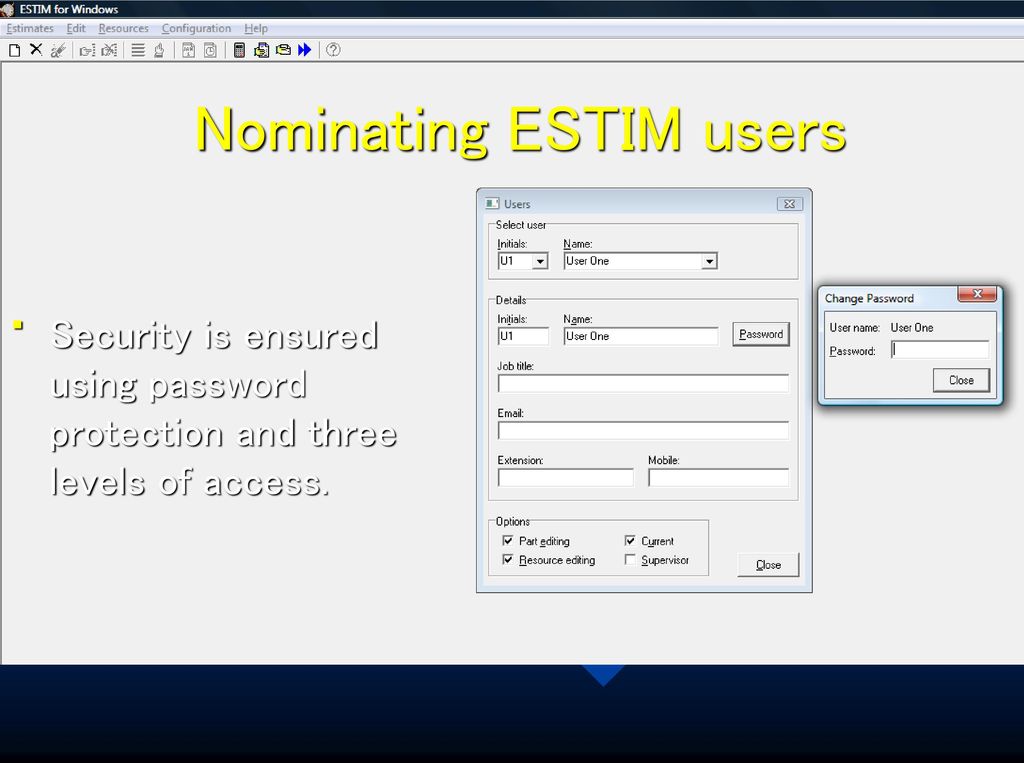
Estim Computer Software
At Home staff members are in the office and available most weekdays.
Brain-mapping in clinical and research environments g.Estim PRO is a constant current, biphasic electrical stimulator intended for stimulation of neural tissue. G.Estim PRO has an applied part of type BF with connectors for bipolar stimulation electrodes (anode and cathode). The device is controlled by a computer via USB connection. Akpp hendaj f4a51 2008 manual.
It also has digital outputs for synchronization with other devices. A hand-switch allows you to perform stimulation manually. Alternatively, a foot-switch can be used to explicitly enable/disable stimulation. G.Estim PRO includes an impedance check and measures the actually applied stimulation current and voltage for verification purposes. With its 80V compliance voltage, it is perfectly suited for use with standard as well as high-impedance electrodes and is able to produce the required stimulation current.
The device is CE certified (Europe) and FDA-cleared (USA) for use in human patients for investigations like electrical cortical stimulation (ECS) mapping. The g.Estim PRO is intended for functional brain mapping via electrical stimulation prior to cortical resections in the vicinity of essential cortex. The device must be used by medically trained and qualified personnel within a medical environment. For closed-loop experiments, a g.USBamp or g.HIamp is used with g.HIsys to record EEG/ECoG data, perform real-time analysis and to control the g.Estim PRO for cortical stimulation (for research purposes only).
The Advanced Mode (only for research applications) is suitable for advanced mapping procedures. This mode provides an extended configuration interface with additional settings. • The Pulse settings group contains controls for defining the shape of the stimulation pulses. If the desired stimulus shall consist of more than one pulse, a train can be set.
Sbornik recepteur blyud i kulinarnih izdelij zdobnov ciganenko skachatj. • Therefore, the Train settings group contains controls for defining the layout of more than one pulse into a stimulation train. • The Sequence settings group contains controls for defining the layout of more than one train into a stimulation sequence. This group is only available in the Advanced mode. • The Session group provides an overview about the chosen operation mode, the Doctor, the Operator and the Session identifier. • The Electrode Type and Surface group provides information about the chosen Electrode.
The specified Electrode type and Surface area are shown. A click to the electrode type leads to the Electrode specification dialog (described above) and allows for changing the electrode type/surface area. • The Status/Control area contains all the elements for controlling the stimulation.
• At the right side of the area, the stimulation control buttons are located. By clicking the Activate button, the device changes to the ACTIVE state and is ready for stimulation. After a click to Activate, no settings can be changed. For changing settings, the stimulator has to be brought to the STOP state by clicking the Stop button.
The following parameters are available: • Stimulation phase amplitude: 0.05 mA – 15 mA, Resolution 10 µA, Accuracy ± 10% or 50 µA, whichever greater • Pulse form: biphasic and monophasic • Pulse onset interval: 2 ms – 10000 ms • Pulse rate (per s): 0.1 – 500 pulses per second with a resolution of 0.1 pulses per second, Accuracy ± 10% • Inter-phase duration: 0 – 1.0 ms in 10 µs increments, ± 10% or ± 20 µs whichever greater • Train duration: 1 – 30000 pulses. The Basic Mode is suitable for standard ECS mapping procedures using standard cortical electrode grids. This mode provides a basic configuration interface with the most important settings. The following parameters are available: • Stimulation phase amplitude: 0.2 – 15 mA, Resolution 10 µA, Accuracy ± 10% or 50 µA, whichever greater • Phase shape: rectangular • Pulse form: only biphasic • Train duration: 1 pulse – 20 seconds • Pulse onset interval: 10 ms – 500 ms • Pulse rate (per s): 2 – 100 pulses per second with a resolution of 0.1 pulses per second, Accuracy ± 10% • Phase duration: 0.1 – 1.0 ms in 10 µs increments, ± 10% or ± 20 µs whichever greater • Inter-phase duration: always 0 ms. The Handheld Mode is suitable for intraoperative situations where the surgeon wants to stimulate multiple locations of the cortex with a hand-held probe.

This mode provides a configuration interface with the most important settings. In this mode, the stimulator constantly measures the resistance between the electrodes. The following parameters are available: • Stimulation phase amplitude: 0.2 – 15 mA, Resolution 10 µA, Accuracy ± 10% or 50 µA, whichever greater • Phase shape: rectangular • Pulse form: only biphasic • Train duration: 1 pulse – 20 seconds • Pulse onset interval: 10 ms – 500 ms • Pulse rate (per s): 2 – 100 pulses per second with a resolution of 0.1 pulses per second, Accuracy ± 10% • Phase duration: 0.1 – 1.0 ms in 10 µs increments, ± 10% or ± 20 µs whichever greater • Inter-phase duration: always 0 ms. Facephenes and Rainbows: Causal Evidence for Functional and Anatomical Specificity of Face and Color Processing in the Human Brain The human brain handles several mental processes and cognitive tasks like the visual perception of the environment. Many studies investigated the role of individual brain regions during dedicated mental processes and tried to understand whether a specific brain region is exclusively engaged in such a process. In a recent study we partly answered that question by electrically stimulating the ventral temporal brain of a patient who underwent surgical treatment of epilepsy. Electrical stimulation of color- and face-selective sites, which were identified by means of visual evoked responses in the brain waves, affected only color and face percepts, respectively.